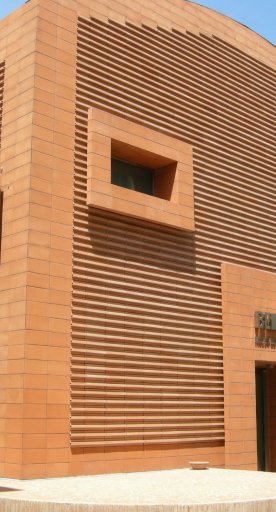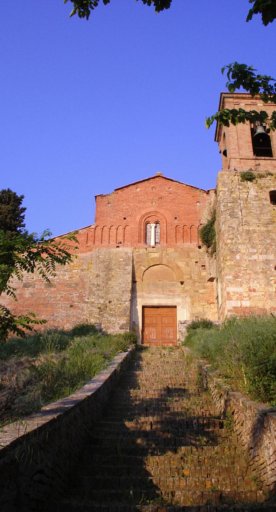Santa Verdiana Museum of Sacred Art
An immersion in the devotion and sacred art of Valdelsa, including medieval masterpieces, illuminated codices and precious goldsmithing
In the historic center of Castelfiorentino, adjacent to the shrine dedicated to Saint Verdiana—a symbolic and spiritual figure for the local community—is the Santa Verdiana Museum, a treasure chest of sacred art where history, faith and beauty intertwine.
Opened in 1999, the museum grew from a collection of works started as early as the 1950s then boosted by the historic “Arte in Valdelsa” exhibition of 1963. Over time, the museum project has been supported by prominent figures such as Cardinal Silvano Piovanelli and Don Marco Viola, in collaboration with the superintendencies, particularly Antonio Paolucci.
Housed inside the Casalone, an old rustic structure adjacent to the sanctuary and connected via an internal passageway, the museum is designed to highlight works from not only the church itself but also from numerous parishes and parish churches in the Castelfiorentino area. Most of the works on display are in fact paintings, liturgical furnishings and votive gifts offered over the centuries in homage to the patron saint.

The exhibition is spread over two floors and four rooms, divided by periods and artistic types, with paintings on wood, sculptures, illuminated manuscripts, vestments and fine goldsmithing.
Right from the entrance, visitors are greeted by masterpieces from the 13ᵗʰ and 14ᵗʰ centuries. Among the most valuable works is the Madonna and Child attributed to Cimabue from the Collegiate Church of Santi Lorenzo e Leonardo, an emblem of the transition from Byzantine rigidity to the new Gothic sensibility. Alongside this is the Cross painted by Corso di Buono, the gold-backed cusped panel depicting Saint Verdiana by an anonymous 14ᵗʰ-century Sienese master, and the splendid Madonna and Child by Taddeo Gaddi, a disciple of Giotto.
The tour continues with a section devoted to illuminated manuscripts dating from the 13ᵗʰ to 18ᵗʰ century, as witnesses to a cultured and refined devotion. This is followed by rooms dedicated to Florentine painting between the 15ᵗʰ and 16ᵗʰ centuries, where works by Francesco Granacci, Rossello di Jacopo Franchi and Alesso di Benozzo stand out, as well as a collection of sculptures including an early 16ᵗʰ-century Madonna and Child in marble.
On the upper floor are sections devoted to sacred furnishings, liturgical ornaments and goldsmithing, with chalices, pyxes, astylar crosses and monstrances from the sanctuary or commissioned by Florentine noble families. Precious objects, often made in Florentine workshops, that tell of a deep connection between popular devotion and sacred art.



